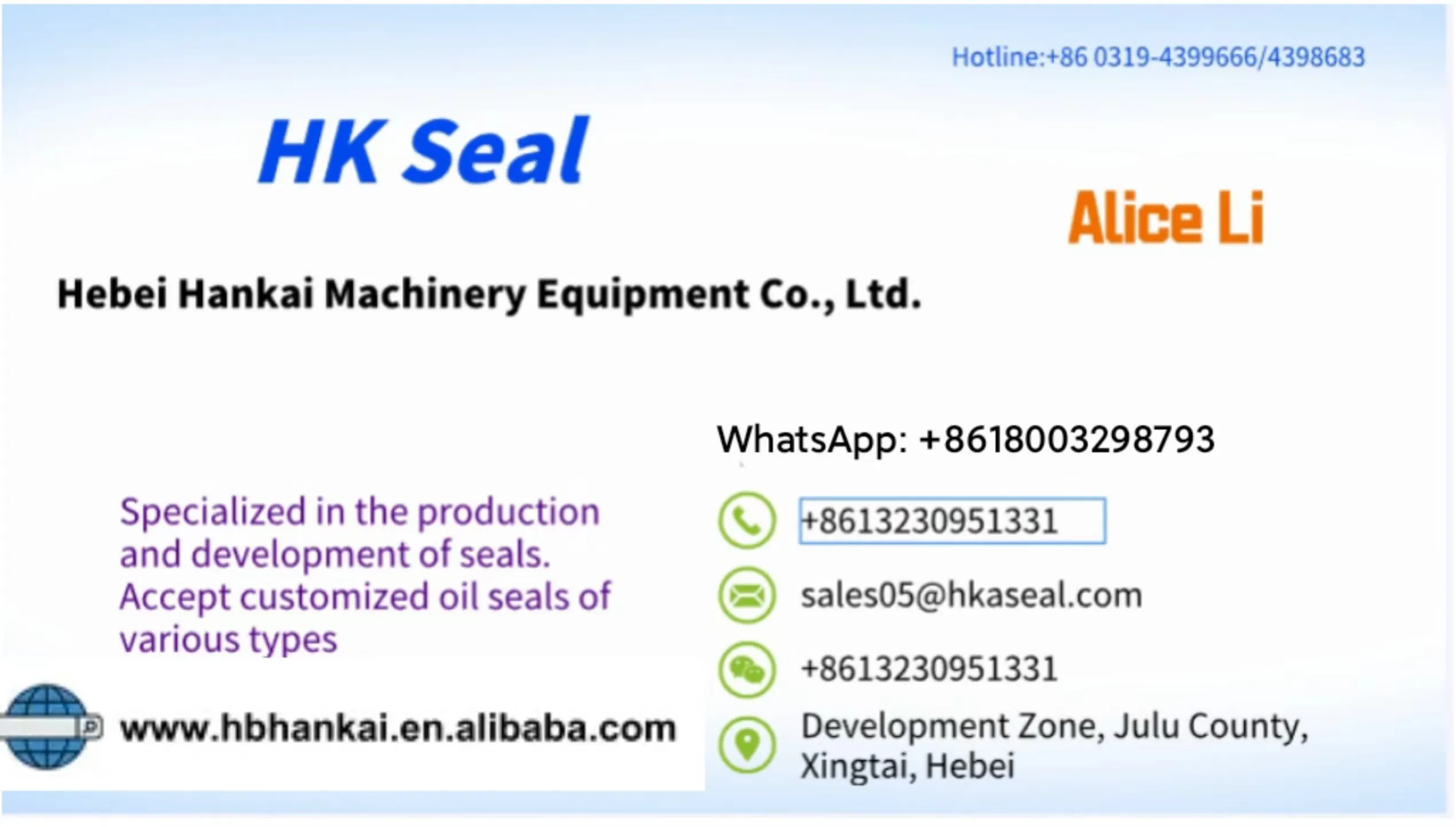Dec . 04, 2024 20:36 Back to list
wiper seal
Understanding Wiper Seals Function, Design, and Applications
Wiper seals play an essential role in various mechanical systems, primarily in hydraulic and pneumatic cylinders. Their primary function is to prevent contaminants such as dirt, dust, and moisture from entering the cylinder while also retaining the hydraulic fluid or lubrication within. This dual functionality ensures that machines operate smoothly and efficiently, minimizing wear and extending the lifespan of the equipment.
Design and Material Composition
The design of wiper seals can vary based on the specific application and environmental requirements. Typically, they are made from a range of elastomer materials, such as nitrile rubber, polyurethane, or fluorocarbon. These materials are chosen for their excellent resistance to wear, temperature variations, and chemical exposure.
Wiper seals are usually wedge-shaped, meaning they have a tapered edge that can effectively scrape off any contaminants from the rod or shaft as it moves in and out of the cylinder. This scraping action is crucial for maintaining cleanliness and ensuring optimal performance within hydraulic and pneumatic systems.
Types of Wiper Seals
There are several types of wiper seals, each designed for specific applications and environments. The most common types include
1. Single Wiper Seals These are simple and cost-effective options, featuring a single lip that serves to wipe away contaminants. They are typically used in applications where the exposure to contaminants is minimal.
2. Double Wiper Seals These seals have two wiping lips and are used in more demanding environments. The dual action provides a better sealing solution, effectively keeping contaminants at bay.
3. Heavy-Duty Wiper Seals Designed for harsh conditions, heavy-duty wipers are made from robust materials that can withstand extreme temperature, pressure, and abrasive forces. They are commonly used in industrial machinery and construction equipment.
wiper seal

4. Polymeric Wiper Seals These seals are formulated with advanced polymers that offer enhanced durability and resistance to a wide range of chemicals. They are particularly useful in applications involving aggressive fluids or high temperatures.
Applications of Wiper Seals
Wiper seals find applications in various industries, including automotive, aerospace, construction, and manufacturing. In hydraulic systems, they are used in cylinders, accumulators, and valves to keep the internal components clean and functioning efficiently. In the automotive sector, wiper seals are crucial for preventing dirt from entering critical engine components and helping to maintain the performance of steering systems.
In the aerospace industry, where precision and reliability are paramount, wiper seals ensure that hydraulic systems operate efficiently under extreme conditions. Additionally, these seals are also used in recreational vehicles, agricultural equipment, and industrial robotics.
Maintenance and Replacement
While wiper seals are designed to be durable, they do have a finite lifespan. Regular maintenance checks are essential to identify any signs of wear or damage. Signs that a wiper seal may need replacement include visible wear on the seal edge, increased leakage, or a drop in system performance.
Proper lubrication and the selection of the right seal for the specific application can significantly extend the life of a wiper seal. It’s crucial to ensure that seals are installed correctly to prevent issues in the long term.
Conclusion
In conclusion, wiper seals are a critical component in many mechanical and hydraulic systems, serving the dual purpose of preventing contamination while retaining essential fluids. Understanding the various types and their applications can help industries choose the right seals for their specific needs. By investing in high-quality wiper seals and maintaining them properly, businesses can enhance the performance and longevity of their equipment, ultimately leading to improved efficiency and reduced operational costs.
-
TCN Oil Seal Metal Ring Reinforcement for Heavy Machinery
NewsJul.25,2025
-
Rotary Lip Seal Spring-Loaded Design for High-Speed Applications
NewsJul.25,2025
-
Hydraulic Cylinder Seals Polyurethane Material for High-Impact Jobs
NewsJul.25,2025
-
High Pressure Oil Seal Polyurethane Coating Wear Resistance
NewsJul.25,2025
-
Dust Proof Seal Double Lip Design for Construction Equipment
NewsJul.25,2025
-
Hub Seal Polyurethane Wear Resistance in Agricultural Vehicles
NewsJul.25,2025
-
The Trans-formative Journey of Wheel Hub Oil Seals
NewsJun.06,2025
Products categories
















